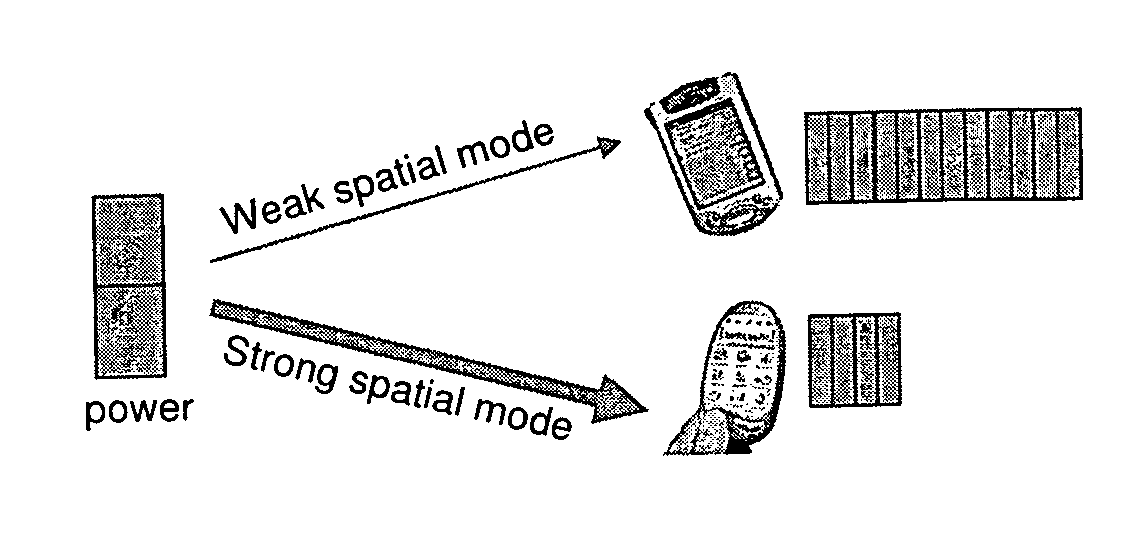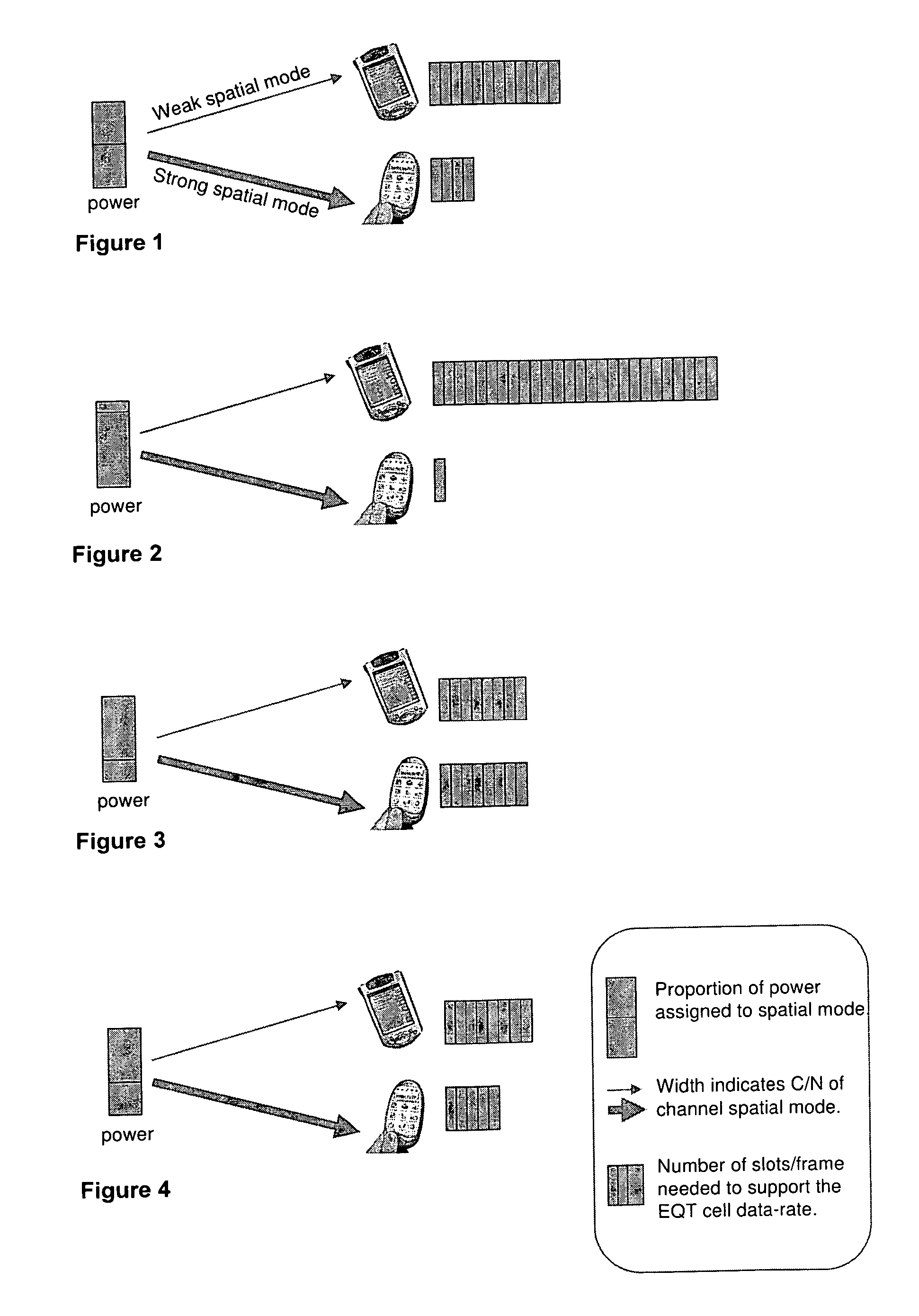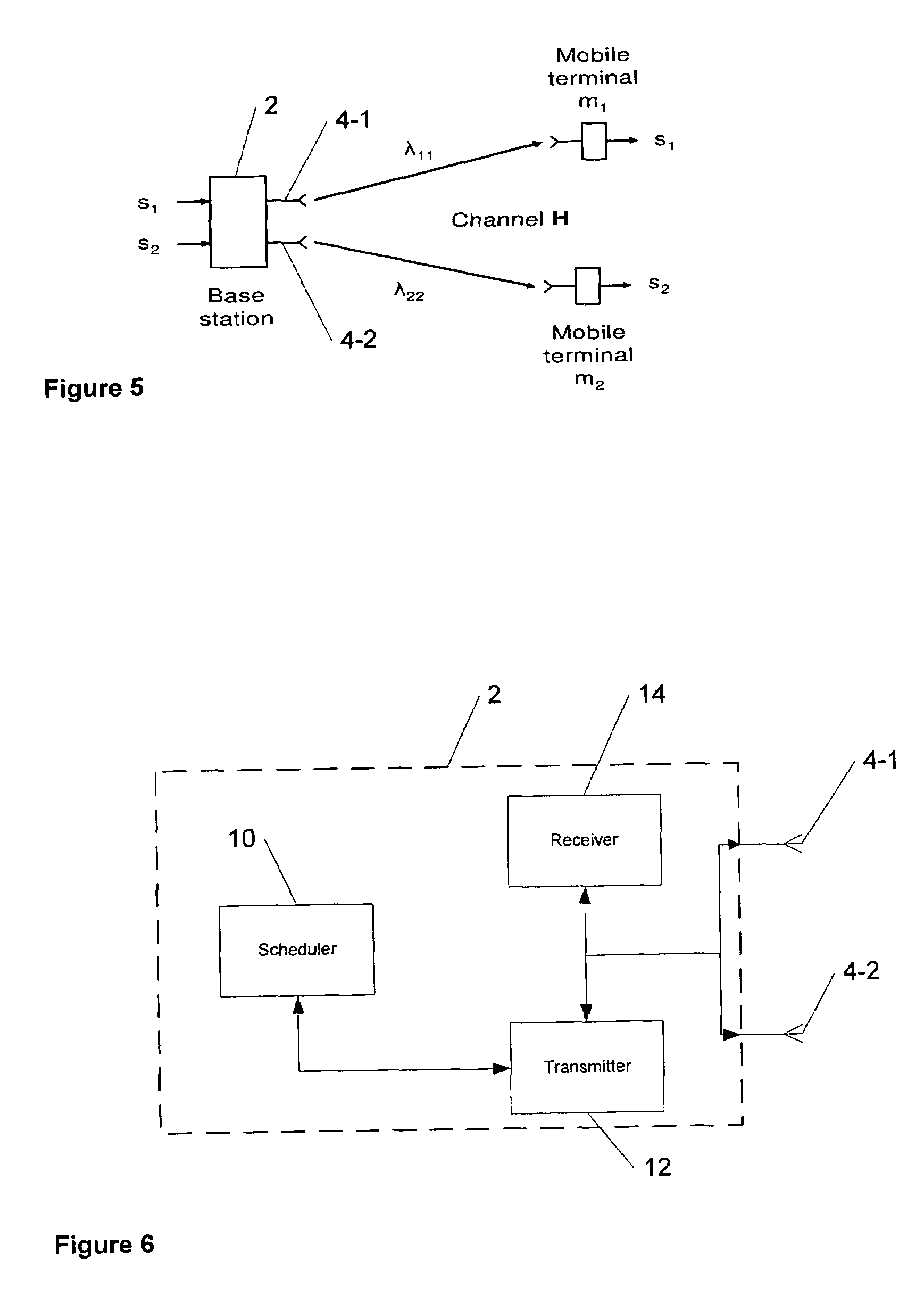Transmit power allocation in a distributed MIMO system
a technology of transmit power and distributed mimo, which is applied in the direction of transmission monitoring, power management, wireless communication, etc., to achieve the effect of increasing maximising the equal throughput ra
- Summary
- Abstract
- Description
- Claims
- Application Information
AI Technical Summary
Benefits of technology
Problems solved by technology
Method used
Image
Examples
Embodiment Construction
[0023]As discussed above, in a distributed MIMO system there are several possible ways of servicing the mobile stations in a cell (i.e. that group of mobile stations being serviced by the same set of base station antennas). Effectively, there are three main degrees of freedom. Firstly, the duration (or dwell) of transmissions to any one mobile station may be varied to increase or decrease the volume of data transmitted to that terminal. Thus more time slots may be allocated to a particular mobile station to increase the volume of data transmitted to that mobile station (for a given data rate). However, since the total transmission time is a finite resource, increased dwell for one mobile station will result in reduced dwell for other mobile stations sharing the same cell.
[0024]Secondly, the modulation level may be varied. Higher levels of modulation generally result in higher data rates (i.e. more data transmitted over a given period of time). However, the capability to increase mod...
PUM
 Login to View More
Login to View More Abstract
Description
Claims
Application Information
 Login to View More
Login to View More - R&D
- Intellectual Property
- Life Sciences
- Materials
- Tech Scout
- Unparalleled Data Quality
- Higher Quality Content
- 60% Fewer Hallucinations
Browse by: Latest US Patents, China's latest patents, Technical Efficacy Thesaurus, Application Domain, Technology Topic, Popular Technical Reports.
© 2025 PatSnap. All rights reserved.Legal|Privacy policy|Modern Slavery Act Transparency Statement|Sitemap|About US| Contact US: help@patsnap.com



